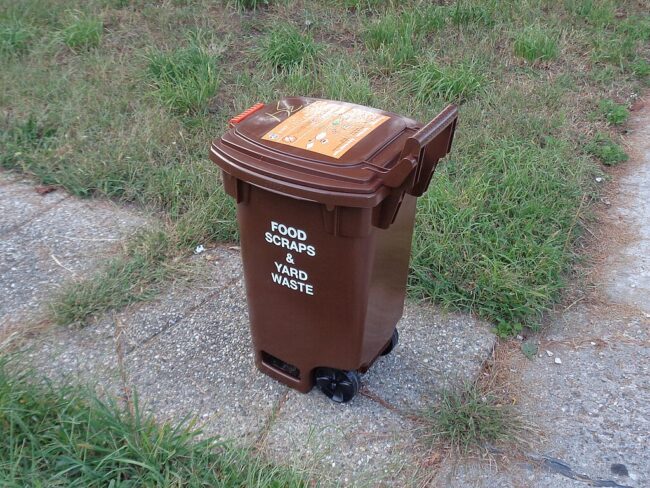In the U.S., more than one third of food goes to waste. As such, more food ends up in landfills than any other material. There, organic products decompose and produce methane, a powerful greenhouse gas that contributes to warming the planet. According to the Environmental Protection Agency, discarded food is responsible for 58 percent of methane emissions from landfills. But this organic waste can instead be put to good use if it is composted.

Composting is a natural process that recycles organic waste like discarded food, paper or yard litter into a rich material called compost. With air and moisture, microorganisms—bacteria and fungi—transform this waste into a valuable material that can improve soil quality. Compost adds nutrients and good microbes to soil, helps retain moisture, reduces erosion, filters stormwater and eliminates the need for chemical fertilizers or pesticides.
New York City’s restaurants, large grocery stores and other food services have been required to separate out their organic waste for composting since 2013, but as of this past April, all city residents are now required to do this as well. Property owners can be fined up to $300 if food and yard waste are not separated from regular trash. New Yorkers must place food and yard waste into a separate bin for curbside pickup. This includes produce, eggshells, coffee grounds, bread, pasta, cereal, meat and bones, dairy products, cooked foods, greasy uncoated paper plates, pizza boxes, plants and yard waste, and products labeled compostable. The organic waste is taken to large composting facilities in New Jersey or Staten Island where it is broken down by bacteria into compost, which is then sold to gardeners or given to community groups.

We asked Steve Cohen, director of the M.S. in Sustainability Management program at the Columbia Climate School, about the status of NYC’s composting program.
How is NYC doing with its composting?
It’s still not great, but it’s better than it was, because in April of 2025 the Department of Sanitation started to fine property owners who weren’t separating their organic waste. That resulted in a pretty substantial increase in collection, but it’s still a small proportion of the total organic waste in the city. They did set up some new processing capacity—a new compost distribution site in Astoria. But so far, processing capacity has not been an issue, because only a very small proportion of the organic waste is actually collected. It was below 5 percent, and despite some significant increases recently, I doubt that it’s more than 10 percent of the actual organic waste from residences.
Why do you think there is not more participation in recycling organic waste?
I don’t think it’s a question of education. I just think NYC is a very fast-paced place. We’re built around energy, mobility, community and convenience, and people just don’t care enough. It’s not any more complicated than that. They have higher priorities.
Are there any incentives that could work?
We’ve had penalties and education, but I think people just can’t be bothered. If it were going to have happened, it would be happening already.
So what is the solution to all our organic waste and garbage?
These programs are useful because they’re better than nothing, and they do take some of the garbage out of landfills and put them to good use. And it’s more now than it was when they started. Maybe someday we’ll get to a quarter of the organic waste, which is, again, a big contribution. But if you want to get to 100 percent, this is not the way to do it.
What is the way?
What you need to do is turn the waste stream into an economic asset instead of a liability. In New York, before World War II, we just threw garbage into the ocean where it decomposed because it didn’t have toxins and plastics in it. Then, after the war, we started to build “sanitary landfills” all over the city. In 2001, we ran out of space when Fresh Kills Landfill got filled. Then we had to start exporting the waste. It costs a billion dollars a year or more to ship it and pay the tipping fees [charges to dump waste] to other places. The simple problem is the real estate. So now you have this huge cost of getting rid of solid waste, which also means you have the potential to generate a revenue stream to build the capital facilities to mine the waste.
How would that work?
If we’re going to create a circular economy, we can’t depend on voluntary markets or the voluntary human sorting of waste. We have to set up a system where we have a single line of waste—everything mixed together—and then we’ll use robotics and artificial intelligence to separate the waste electronically, hopefully with renewable energy. This system will be able to mine the waste stream for resources—everything from fertilizer to methane to heavy metals and rare earths and everything else. And the mining operation will pay for the waste separation operation. At that point, mining our garbage will be more cost-effective than mining the planet. The cities that can do this will be much more economically viable than the cities that are still paying to find a place to store and dump their garden. So I think in the long run, this is going to happen, but I’m talking about a generation from now. It’s not something we’re going to see very soon. But that’s really going to be the future.


